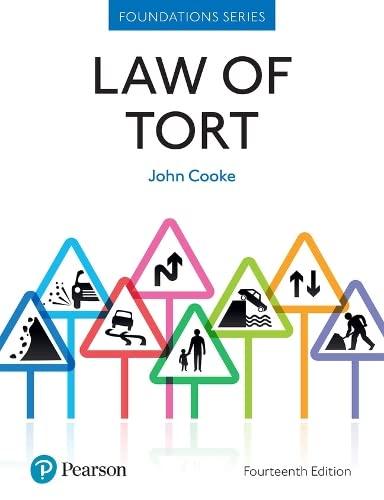Question
The sale of goods is the transfer of ownership to tangible personal property in exchange for money, other goods, or the performance of services. The
The sale of goods is the transfer of ownership to tangible personal property in exchange for money, other goods, or the performance of services. The law of sales of goods is codified in Article 2 of the Uniform Commercial Code. While the law of sales is based on the fundamental principles of contract and personal property, it has been modified to accommodate current practices of merchants.
For many years, consumers dealt with merchants and providers of services on the basis of caveat emptor (let the buyer beware). Buyers were expected to look out for and protect their own interests. In addition, much of the law concerning the sales of goods and the extension of credit was structured to protect business interests rather than consumer interests. Beginning in the mid-1960s, at about the same time that the law of product liability was changing, many consumers recognized that these sales and credit laws put them at a disadvantage in trying to protect what they thought were their rights. Consumer groups lobbied Congress, state legislatures, and city halls to pass statutes or ordinances changing this body of law to make it more favorable to consumers.
STEP ONE:
ASSIGNED READING:Read Chapters 19, 22 and 46 of Law for Business (Barnes, 2012).
STEP TWO:
CHAPTER NINETEEN:
1) Describe the difference between a transaction involving the sale of goods to which the Uniform Commercial Code applies and a transaction to which common law contract principles apply.
2) Explain when title to goods passes from the seller to the buyer.
3) Explain the concept of risk of loss.
CHAPTER TWENTY-TWO:
4) Explain what is meant by the term liquidated damages and discuss when the UCC allows the enforcement of a liquidated damages clause in a contract for the sale of goods.
5) List and describe the remedies that the Code makes available to an injured seller.
6) List and describe the remedies that the Code makes available to an aggrieved buyer.
7) Explain what is meant by the terms incidental damages and consequential damages and indicate when an injured buyer is able to recover consequential damages.
CHAPTER FORTY-SIX:
8) Explain the role of the Federal Trade Commission in protecting consumers
9) Identify the several ways the Fair Debt Collection Practices Act helps consumers.
10) Discuss how consumers are protected by the Consumer Product Safety Commission.
Step by Step Solution
There are 3 Steps involved in it
Step: 1

Get Instant Access to Expert-Tailored Solutions
See step-by-step solutions with expert insights and AI powered tools for academic success
Step: 2

Step: 3

Ace Your Homework with AI
Get the answers you need in no time with our AI-driven, step-by-step assistance
Get Started


